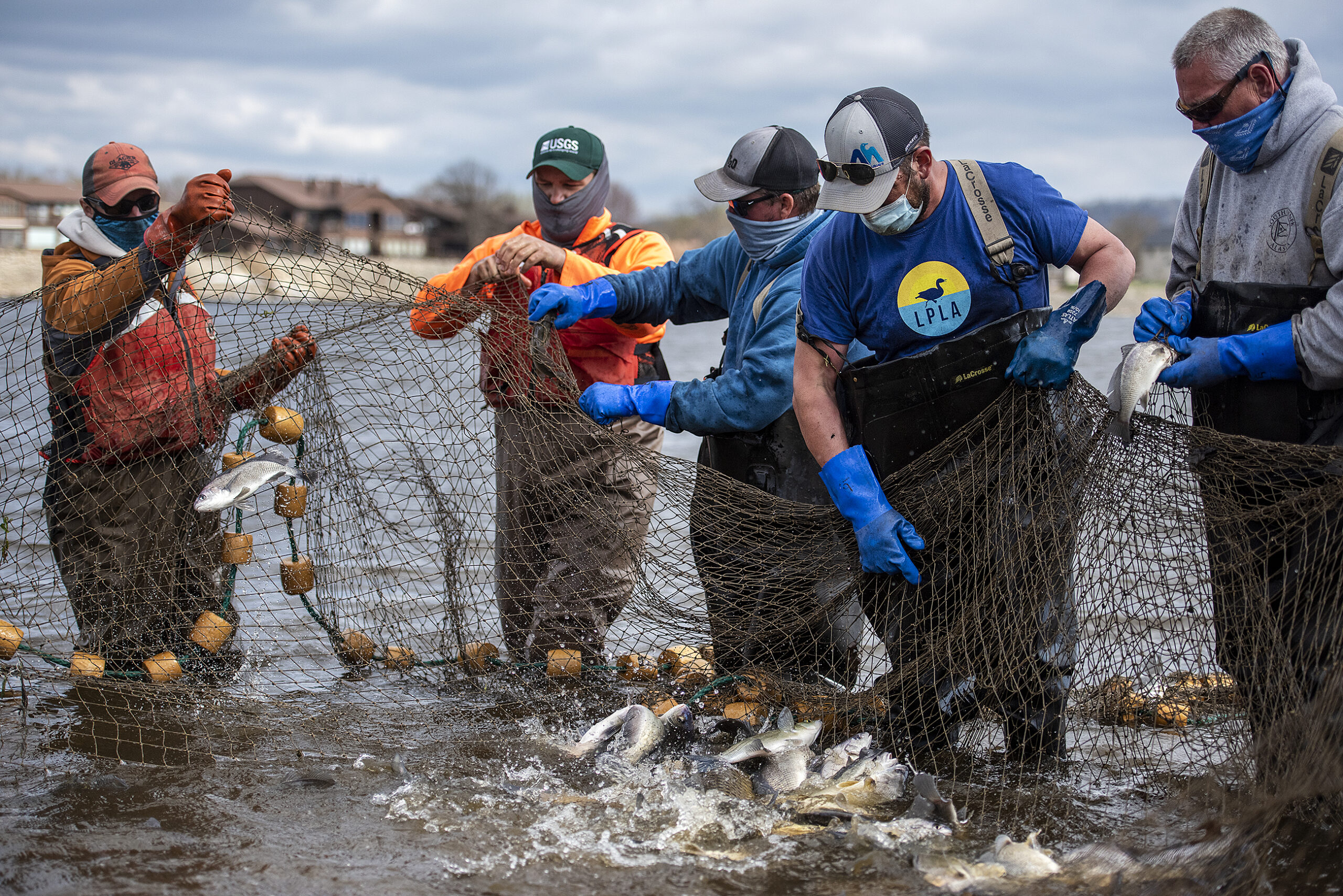Wisconsin News
Invasive carp detected for the first time in lower Chippewa and Black rivers

Invasive carp have been detected for the first time in the lower Chippewa and Black rivers in western Wisconsin, according to the Wisconsin Department of Natural Resources.
The DNR says high water levels on the Mississippi River in June and early July likely allowed them to swim upstream.
The discovery is the first in the two tributaries of the Mississippi River as invasive carp have been advancing upstream. Tyler Mesalk, the DNR’s aquatic invasive species coordinator, said the detection indicates the invasive fish continues to spread along the river. Although, he said preliminary data found few fish in the two rivers.
“There are very few in numbers, so it definitely shows, at least at this point in time, low densities,” Mesalk said.
The agency determined the presence of invasive carp in the lower Chippewa River following reports from anglers who observed jumping fish in July at the Dells Dam in Eau Claire. In August, DNR staff retrieved data from an acoustic receiver located 6 miles downstream of the dam that recorded a transmitter embedded within a single silver carp on July 21, Aug. 4 and Aug. 26 in the lower Chippewa River.
Mesalk said the fish had originally been tagged and captured about five years ago on the Mississippi River near Davenport, Iowa.
Last month, the DNR also retrieved data from an acoustic receiver that confirmed a single silver carp had been detected on the lower Black River near Melrose on May 25 and June 5 this year. The fish had previously been captured and tagged in Pool 5A near Winona on the Mississippi River.
The invasive fish were first introduced to the southern United States in the early 1960s and 1970s, according to the U.S. Fish and Wildlife Service. Known for their ability to leap from the water when disturbed, they’ve since spread into the Mississippi River and continue to advance upstream. Invasive carp had previously been found on the Wisconsin River and St. Croix River near Prescott.
Invasive carp also threaten the $7 billion fishing industry and $16 billion recreation boating industry on the Great Lakes.
The fish has been known to outcompete native species because they can consume almost half of their body weight in food each day. Mesalk said the fish are filter feeders that eat various forms of plankton, saying it’s possible they could disrupt the food web. Newly hatched young fish rely on plankton as a food source during spawning.
However, he said it’s unclear what effects invasive carp may be having on other fish species.
“Because we don’t have any long-term data, due to this being new, we can’t necessarily quantify what will or will not happen in both the Black or the Chippewa rivers,” Mesalk said.
In May, the U.S. Fish and Wildlife Service collected 134 water samples from the lower Chippewa River in Eau Claire that showed no signs of environmental DNA from invasive carp. The agency is conducting another round of sampling within the Chippewa River. An agency spokesperson said it had no further information to share beyond the DNR’s findings.
Mesalk said no fish have been retrieved through sampling yet, but DNR staff will continue to monitor the rivers for invasive carp.
The public is encouraged to report any signs of invasive carp in the two rivers or surrounding waterways. The DNR said invasive carp may be observed in tributaries of the lower Chippewa River, including the Red Cedar River up to the Lake Menomin Dam and the Eau Claire River up to the Lake Altoona Dam.
Anglers are advised to kill any potential invasive carp they catch, put them on ice and notify local DNR staff.
Last year, more than 400 invasive carp were removed from the Mississippi River near Trempealeau by tracking tagged fish.


